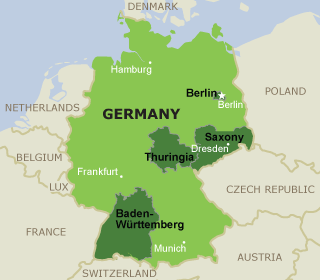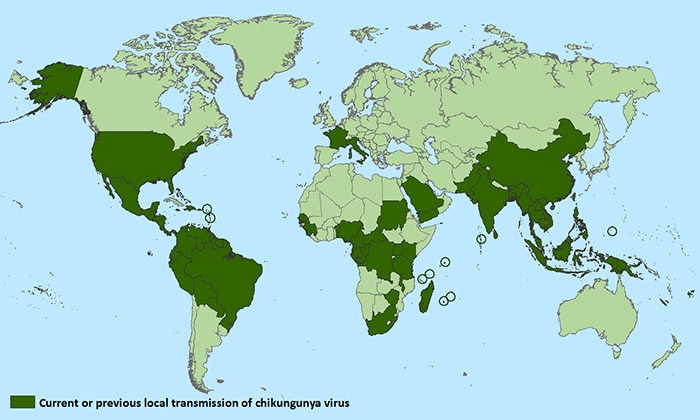Archive for November, 2015
H7N9: China
Monday, November 23rd, 2015What is the current situation?
According to the World Health Organization, 667 cases and 229 deaths from H7N9 flu have been reported globally from March 2013 through October 14, 2015, most from the mainland of China. Cases have been confirmed in the following administrative areas of China: Anhui, Beijing, Fujian, Guangdong, Guangxi, Guizhou, Hebei, Henan, Hubei, Hunan, Jiangsu, Jiangxi, Jilin, Shandong, Shanghai, Xinjiang, and Zhejiang. Smaller numbers of cases have been identified in travelers from Hong Kong, Taiwan, Malaysia, and Canada.
CDC advises people traveling to China to avoid contact with poultry (including poultry markets and farms), birds, and their droppings. There are no recommendations against travel to China.
What is avian influenza A (H7N9)?
Avian influenza A (H7N9) is an influenza (flu) virus found in birds that does not normally infect humans. However, in spring of 2013, China began reporting infections with the virus in people. Most of these infections have been associated with contact with infected poultry or contaminated environments (such as poultry markets) in China. Early symptoms are consistent with seasonal flu and may include fever, cough, sore throat, muscle aches and fatigue, loss of appetite, and runny or stuffy nose. However, infection with this virus often causes severe respiratory illness and, in some cases, death (see http://www.cdc.gov/flu/avianflu/h7n9-virus.htm).
What can travelers do to protect themselves?
There is no vaccine to prevent H7N9 flu.
- Do not touch birds, pigs, or other animals.
- Don’t touch animals, whether they are alive or dead.
- Avoid live bird or poultry markets.
- Avoid other markets or farms with animals (wet markets).
- Eat food that is fully cooked.
- Eat meat and poultry that is fully cooked (not pink) and served hot.
- Eat hard-cooked eggs (not runny).
- Don’t eat or drink dishes that include blood from any animal.
- Don’t eat food from street vendors.
- Practice hygiene and cleanliness.
- Wash your hands often.
- If soap and water aren’t available, clean your hands with hand sanitizer containing at least 60% alcohol.
- Don’t touch your eyes, nose, or mouth. If you need to touch your face, make sure your hands are clean.
- Cover your mouth and nose with a tissue or your sleeve (not your hands) when coughing or sneezing.
- Try to avoid close contact, such as kissing, hugging, or sharing eating utensils or cups, with people who are sick.
- If you feel sick and think you may have avian flu after visiting China:
- Talk to your doctor or nurse if you feel seriously ill, especially if you have a fever, cough, or shortness of breath.
- Tell them about your travel to China.
- For more information about medical care abroad, see Getting Health Care Abroad(http://wwwnc.cdc.gov/travel/page/getting-health-care-abroad).
- Avoid contact with other people while you are sick.
Clinician information
Clinicians should consider the possibility of avian influenza A (H7N9) virus infection in people presenting with respiratory illness within 10 days of travel to China, particularly if the patient reports exposure to birds or poultry markets. Although most H7N9 cases have resulted in severe respiratory illness in adults, infection may cause mild illness in some and may cause illness in children as well. Influenza diagnostic testing in patients with respiratory illness of unknown etiology may identify human cases of avian influenza A or new cases of variant influenza (such as human infections caused by influenza viruses from pigs) in the United States. Patients with H7N9 are expected to have a positive test result for influenza A virus via reverse-transcription polymerase chain reaction (RT-PCR testing) that will be unsubtypeable by most assays. Nonmolecular rapid test results may be variable. Clinicians who suspect avian influenza A (H7N9) should obtain appropriate specimens and notify their local or state health department promptly. State health departments should notify CDC of suspected cases within 24 hours.
Additional information
- Avian Influenza A (H7N9) Virus (CDC)
- Avian Influenza Travel Health Disease Page(http://wwwnc.cdc.gov/travel/diseases/avian-bird-flu)
- Human infection with influenza A (H7N9) in China—update (WHO)
- Frequently Asked Questions on human infection with influenza A (H7N9) virus, China (WHO).
Scotland: 242 confirmed mumps cases in 2015
Monday, November 23rd, 2015As of March 22, 2015, Health Protection Scotland has reported 242 confirmed mumps cases in 2015. This is an increase from the 45 cases reported during the same period in 2014. The outbreak of mumps is linked to cases in educational establishments and the community.
CDC recommends that travelers to Scotland(http://wwwnc.cdc.gov/travel/destinations/traveler/none/united-kingdom) protect themselves by making sure they are vaccinated against mumps before travel.
Measles in Germany
Sunday, November 22nd, 2015As of May 11, 2015, the Berlin Senate Department of Health and Social Affairs has reported more than 1,700 cases of measles, which is about a 50% decrease since April. Most of the measles cases have been in Berlin and the states of Baden-Württemberg, Saxony, and Thuringia. Other states in Germany have 10 or fewer cases. A national immunization campaign was launched in June.
CDC recommends that travelers to Germany(http://wwwnc.cdc.gov/travel/destinations/traveler/none/germany) protect themselves by making sure they are vaccinated against measles, particularly infants 6–11 months of age (1 dose of measles vaccine) and children 12 months of age or older (2 doses of measles vaccine). Clinicians should keep measles in mind when treating patients with fever and rash, especially if the patient has recently traveled internationally.

NYC’s response to terror: The Critical Response Command
Sunday, November 22nd, 2015** A permanent force — one that could be rapidly dispatched with the appropriate armor and weaponry
** Needed to counter heavily armed assailants.
** In addition to the Critical Response Command, the department recently created a citywide unit of roughly 700 patrol officers — the Strategic Response Group — who are also trained to use and are outfitted with semiautomatic rifles.

FEMA Daily Operations Briefing for Saturday, November 21, 2015
Saturday, November 21st, 2015Atlantic: Tropical cyclone activity is not expected during the next 48 hours
Eastern Pacific: TS Rick; Disturbance 1
Central Pacific: Tropical cyclone activity not expected through Sunday night
Western Pacific: Typhoon In-Fa (27W)
Heavy snowfall possible – Upper Mississippi Valley & Great Lakes
Rain/snow – Gulf Coast to Mid-Atlantic
Red Flags Warnings / Critical Fire Weather Areas – Southern California
Space weather: Past 24 hours – none, Next 24 hours – none
Liberia’s health ministry and the World Health Organization (WHO) have confirmed 3 new Ebola cases, involving a 15-year-old boy from Monrovia and family members.
Saturday, November 21st, 2015Chikungunya: Current Situation
Saturday, November 21st, 2015Where Has Chikungunya Virus Been Found?
- Prior to 2013, chikungunya virus outbreaks had been identified in countries in Africa, Asia, Europe, and the Indian and Pacific Oceans.
- In late 2013, the first local transmission of chikungunya virus in the Americas was identified in Caribbean countries and territories. Local transmission means that mosquitoes in the area have been infected with the virus and are spreading it to people.
- Since then, local transmission has been identified in 45 countries or territories throughout the Americas with more than 1.7 million suspected cases reported to the Pan American Health Organization from affected areas (Updated data from PAHO).
- For information on current outbreaks, consult CDC’s Traveler’s Health website.
- Click here for more information on chikungunya in the United States(http://www.cdc.gov/chikungunya/geo/united-states.html).
Countries and territories where chikungunya cases have been reported* (as of October 20, 2015)

*Does not include countries or territories where only imported cases have been documented. This map is updated weekly if there are new countries or territories that report local chikungunya virus transmission.
AFRICA
- Benin
- Burundi
- Cameroon
- Central African Republic
- Comoros
- Democratic Republic of the Congo
- Equatorial Guinea
- Gabon
- Guinea
- Kenya
- Madagascar
- Malawi
- Mauritius
- Mayotte
- Nigeria
- Republic of Congo
- Reunion
- Senegal
- Seychelles
- Sierra Leone
- South Africa
- Sudan
- Tanzania
- Uganda
- Zimbabwe
ASIA
- Bangladesh
- Bhutan
- Cambodia
- China
- India
- Indonesia
- Laos
- Malaysia
- Maldives
- Myanmar (Burma)
- Pakistan
- Philippines
- Saudi Arabia
- Singapore
- Sri Lanka
- Taiwan
- Thailand
- Timor
- Vietnam
- Yemen
EUROPE
- Italy
- France
AMERICAS
- Anguilla
- Antigua and Barbuda
- Aruba
- Bahamas
- Barbados
- Belize
- Bolivia
- Brazil
- British Virgin Islands
- Cayman Islands
- Colombia
- Costa Rica
- Curacao
- Dominica
- Dominican Republic
- Ecuador
- El Salvador
- French Guiana
- Grenada
- Guadeloupe
- Guatemala
- Guyana
- Haiti
- Honduras
- Jamaica
- Martinique
- Mexico
- Montserrat
- Nicaragua
- Panama
- Paraguay
- Peru
- Puerto Rico
- Saint Barthelemy
- Saint Kitts and Nevis
- Saint Martin
- Sint Maarten
- Saint Lucia
- Saint Vincent and the Grenadines
- Suriname
- Trinidad and Tobago
- Turks and Caicos Islands
- United States
- US Virgin Islands
- Venezuela
OCEANIA/PACIFIC ISLANDS
- American Samoa
- Cook Islands
- Federal States of Micronesia
- French Polynesia
- Kiribati
- New Caledonia
- Papua New Guinea
- Samoa
- Tokelau
- Tonga
CDC Reports Progress Toward Poliomyelitis Eradication — Pakistan, January 2014–September 2015
Saturday, November 21st, 2015Progress Toward Poliomyelitis Eradication — Pakistan, January 2014–September 2015

Weekly
November 20, 2015 / 64(45);1271-1275
, MD, PhD1; , MBBS2; , MD3; , MPH1; , DMD4; , MD2; , MPH1
“Since Nigeria reported its last case of wild poliovirus type 1 (WPV1) in July 2014, Pakistan and Afghanistan remain the only two countries where WPV transmission has never been interrupted (1). This report describes actions taken and progress achieved toward polio eradication in Pakistan during January 2014–September 2015 and updates previous reports (2,3). A total of 38 WPV1 cases were reported in Pakistan during January–September 2015,* compared with 243 during the same period in 2014 (an 84% decline). Among WPV1 cases reported in 2015, 32 (84%) occurred in children aged <36 months, nine (32%) of whom had never received oral poliovirus vaccine (OPV). Twenty-six (68%) of the 38 reported cases occurred in the Federally Administered Tribal Areas (FATA) and Khyber Pakhtunkhwa (KPK) Province. During January–September 2015, WPV1 was detected in 20% (64 of 325) of environmental samples collected, compared with 34% (98 of 294) of samples collected during the same period in 2014. The quality and scope of polio eradication activities improved considerably following the establishment of a national Emergency Operations Center, which coordinated polio eradication partners’ activities. All activities are following a National Polio Eradication Emergency Action Plan (4) that includes a rigorous action plan for the polio low transmission season (January−April). The presence of WPV1 in environmental samples in areas where no polio cases are detected highlights the need to improve surveillance for acute flaccid paralysis (AFP). Focused efforts to close remaining immunity gaps by locating, tracking, and vaccinating continually missed children and improving coverage with OPV through the routine vaccination program are needed to stop WPV transmission in Pakistan…….”
Liberia: An entire Liberian family was being treated at a special Ebola unit Friday after a 10-year-old boy tested positive for the virus
Friday, November 20th, 2015Mali: Security forces swarmed in to free guests floor by floor and as evening fell, officials said no more hostages were being held and that 18 bodies had been found.
Friday, November 20th, 2015** An extremist group that split from al-Qaida’s North Africa branch claimed responsibility for the attack.



